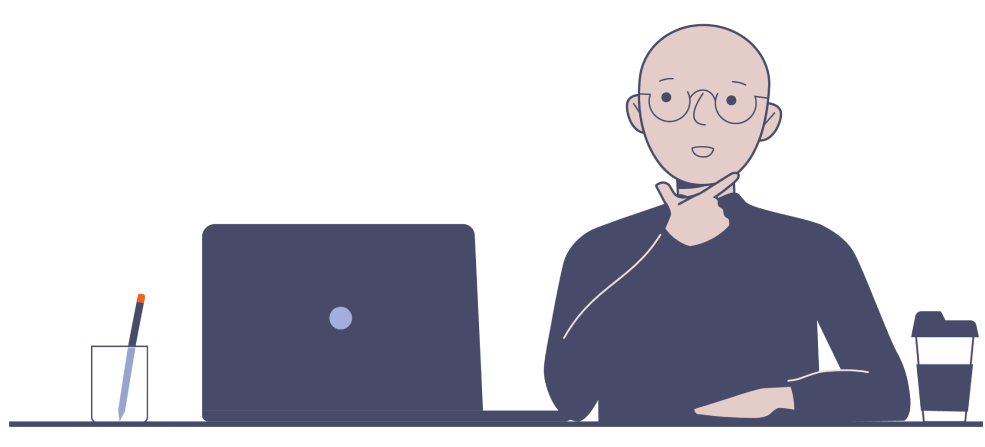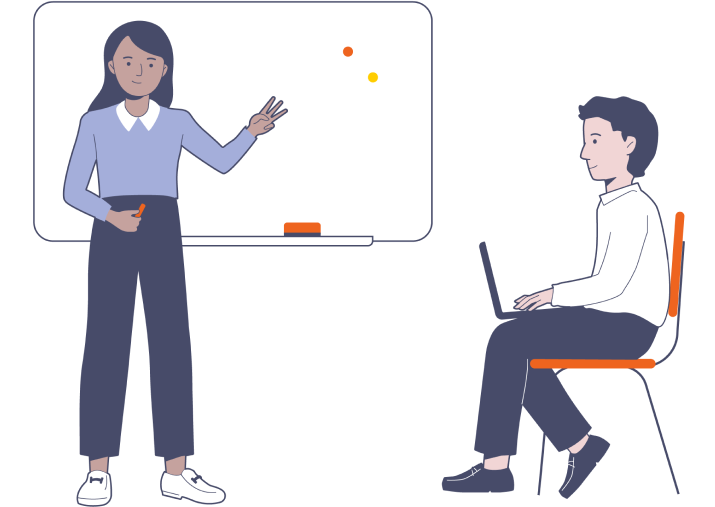
Towards Responsive Coaching
Resources|7th March 2021

Co-Founder & CEO — Steplab
How can we use Instructional Coaching to transform teacher quality when we don't agree about what it is and who it's for?
How can we use Instructional Coaching to transform teacher quality when we don't agree about what it is and who it's for? This series is about redefining what we talk about when we talk about Instructional Coaching. This is the third in a blog series. The final part will follow next week. And for a more general overview of Instructional Coaching, check out this guide.
- 1.
- 2.
- 3.Part 3 Towards Responsive Coaching
- 4.
Part 3: Towards Responsive Coaching
Kate has studied three models of Instructional Coaching: Bambrick-Santoyo's ‘Directive Instructional Coaching’, Jim Knight’s ‘Non-Directive IC’ and Kraft's 'Blank-Canvas’ model. She thinks that none of these are able to respond adequately to the realities of varied teacher expertise (See Part 1).
She explores why each model isn’t the perfect whole-school Instructional Coaching solution (see Part 2), arriving at three principles:
- 1.To come up with the perfect coaching model, we need to look beyond surface-features and into the mechanisms that 'cause' teacher learning.
- 2.Our model must adapt to teacher expertise. Sticking rigidly to a set of mechanisms (e.g., a set coaching protocol) is likely to increase cognitive load and decrease motivation for some teachers.
- 3.Our model should be underpinned by Cognitive Load Theory: for experts, the coach should move towards a less directive,** mechanism-light** approach while for everyone else a more directive, mechanism-rich approach may be required.
Kate needs a coaching model that is responsive to teacher expertise. To do this, she thinks it is important to be clear about the following questions: what does Instructional Coaching aim to do, and how does it work?
The ‘What’ and the ‘How’ of Instructional Coaching
The What: The three models discussed in parts 1 and 2 agree that the aim of coaching is to improve student learning by developing teacher expertise.
Kate is confused. How does this differ from the ‘classic-model’ of CPD where staff recieve regular group training? Surely the aim of this is also to improve learning by helping teachers to get better.
The How: (1) Responsiveness to development needs
A major reason why Kate believes in IC over the ‘classic-model’ is that it is so much more responsive to individual need. In Instructional Coaching, the content is determined by a recent classroom observation. A conversation about the learning of students during this event and how this might be improved drives the choice of action the teacher will take.
Kate thinks of this as the ‘Goldilocks’ principle: coaching is about deciding on an action that is just right. It gives the teacher and their students what they need, when they need it.
After all, for most of the teachers sitting in a whole-staff CPD session, the porridge may well be too hot (“I can’t even get my year 9s to sit down, let alone engage them in a class discussion.”), or too cold (“I’ve been doing this for years: just let me go so I can mark my books and get home to my kids.”). The responsiveness of Instructional Coaching means that the porridge is just right, every time (“I noticed in your lesson that you’re having trouble with…”).
The How: (2) Responsiveness to expertise level
All three of the coaching models discussed in Parts 1 and 2 deliver the kind of responsive support discussed above. Kate’s learnt that this isn’t enough: the mechanisms a coach uses in their feedback must also vary in a way that is responsive to teacher expertise.
In other words, Instructional Coaching should be responsive in two ways: (1) to the development needs of teachers and their students, and (2) to the expertise level of the teacher.
After all, as Kate has already learnt, there’s no point deciding on the perfect change for a teacher and then delivering this in a way that overloads their working memory. Perfect temperature porridge would be worthless if Goldilocks had to eat it using a tooth-pick.
Defining Responsive Coaching
The aim of IC is to develop teacher expertise in a way that is responsive to: 2. The classroom needs of teachers and students [determines the action that a teacher and a coach will take]: e.g.,* the students in this class would learn more if the teacher was better able to ensure attention during the explanation*
- 1.Teacher expertise level [determines the mechanisms that the coach will employ during feedback]: e.g., the teacher doesn’t have a mental model of what good looks like in this area, so the coach will need to provide this.
Diagnosis and Mechanism
Kate starts to think that responsivity to teacher expertise requires her coaching moves to vary between diagnostic and** operative**
- 1.Diagnostic questions pull on what the teacher knows to help the coach determine their expertise level and adapt the use of mechanism
- 2.Operative mechanisms push the teacher to improve their mental models and make changes to their practice.
If she diagnoised that a teacher knew exactly how their lesson could be improved, the steps they needed to take, and had a clear model of effective practice, Kate would adapt her coaching to be mechanism-light and less-directive. On the other hand, her coaching could be directive and mechanism-rich if she diagnosed that the teacher didn’t have a clear idea of how to proceed.
The importance of being responsive
Responsiveness is a key reason why Kate believes in the power of Instructional Coaching. The reality is that it’s very difficult to get better at teaching. Teachers are extraordinarily busy, with a huge variety of tasks to perform every day under significant time pressure. This is why coaches need to help teachers to decide on changes that are just right for the time and place.
Likewise, teaching is the classic example of an ‘ill-structured domain’ where the problems that teachers face on a daily basis have a huge number of potential solutions, each of which requires mastery of a vast swathe of knowledge (Feldon, 2007). Teachers occupy multiple spaces on the novice – expert continuum at one time. In other words, a teacher might be considered an expert at an aspect of behaviour management, but a novice in creating and responding to hinge-questions.
In fact, Kate is starting to think that there’s probably no such thing as being a teaching ‘expert’ across the board.
High-quality Instructional Coaching is about being responsive to the immediate classroom needs of a teacher and their students. It’s also about being responsive to the expertise level of the teacher.
Varying mechanisms to respond to teacher expertise
Although Kate’s convinced that the mechanisms a coach uses must vary according to teacher expertise, she’s less sure about what these are. Her work on Bambrick-Santoyo’s Directive IC suggests a few, but she thinks there must be others. She decides to compile an initial list:
- 1.Setting precise, manageable learning goals, so that teachers know exactly what they need to change
- 2.Modelling teaching moves, so that teachers develop mental models of effective practice
- 3.Analysis of the ‘gap’ between the model of effective practice and the teacher’s practice, so that teachers develop mental models of the change they want to make
- 4.Precise, clear, 'sticky' explanation, so that teachers develop appropriate insights related to the change being made
- 5.Repeated deliberate practice, so that teachers develop habits
- 6.Feedback on practice, so that teachers know when they are approaching mastery of a technique.
Kate thinks that these mechanisms can be combined to suit teachers at different expertise levels. She wants to discover exactly how this works.
She decides to try to map out which mechanisms are expertise-variant (should be used / not used depending on the expertise level of the teacher) and which are expertise-invariant (should be used no matter what) (Sims, 2021).
| Mechanism | Expertise Variance | Because: |
|---|---|---|
| Mechanisms that Kate thinks are likely to be required at all levels of expertise | ||
| Setting precise, manageable learning goals. | Expertise-invariant: this is likely to be an important step for both experts and novices | Both novices and expert teachers need help clarifying and shrinking the change they are going to make because "...from a teacher's perspective the education system is noisy" (Kennedy, 2016) These learning goals should be coach-directed for more novice teachers. If a teacher has a clear idea of an appropriate change, the coach can afford to be less-directive |
| Repeated deliberate practice and feedback | Expertise-invariant: this is likely to be an important step for both experts and novices | For both novices and expert teachers, "habit formation plays an important part in limiting growth in teacher effectiveness" (Sims, Hobbiss & Allen, 2020). Experienced teachers are likely to find their habits even harder to break that less experienced teachers (Ibid). Novice teachers are equally likely to have habits that impede change, even if these were developed before their teaching career began (Feldon, 2007) Teachers' habits are more powerful than what they know or believe in determining their actions (Kennedy, 2016) |
| Mechanisms Kate thinks are likely not required for teachers at different levels of expertise. | ||
| Modelling teaching moves | Expertise-variant: modelling is not always necessary for expert teachers. It is highly likely to be required for more novice teachers. |
Providing external mental models and insights to teachers that already possess significant LTM resources is redundant information that can overload the working memory (Merrienboer & Paas, 1998) More novice teachers may not have models or insights about expert practice. For this reason, modelling and explanation are important steps in helping to support the working memory during learning (Grossman, 2009) |
| Analysis of the 'gap' between learning goals and reality | Expertise-variant: supporting the buidling of clear mental models is not always necessary for expert teachers. It is highly likely to be required for more novice teachers. |
|
| Precise, clear, 'sticky' explanation | Expertise-variant:explaining important insights about the mechanics of learning is not always necessary for expert teachers. It is highly likely to be required for more novice teachers |
What has Kate learnt, and what’s next?
- 1.Kate’s feeling a bit happier in her understanding of the operative mechanisms of IC. She has an initial idea about what mechanisms should be included for experts and teachers who are less expert.
- 2.She’s less sure about the diagnostic questions that make up coaching: there’s work to do on a set of ‘probing’ questions that a coach can ask to help determine expertise level
- 3.Kate feels that she’s ready to start testing her new Responsive Coaching model. She plans to work with some teachers at different expertise levels.
In Part 4, we’ll examine some coaching conversations to look at Responsive Coaching in action.
References
David F. Feldon. (2007) Cognitive Load and Classroom Teaching: The Double-Edged Sword of Automaticity, Educational Psychologist, 42:3, 123-137
Grossman, P. Compton, C. Igra, D. Ronfeldt, M. Shahan, E. (2009)Teachers College Record Volume 111, Number 9, September 2009, pp. 2055–2100
Hobbiss, M. Sims, S. Allen, R. (2020). Habit formation limits growth in teacher effectiveness: A review of converging evidence from neuroscience and social science. Review of Education
Kennedy, M. (2016) How Does Professional Development Improve Teaching? February 2016, Review of Educational Research 86(4)
Merrienboer, J. G. Paas, F. (1998) Educational Psychology Review · September 1998
Sims, S. (2021). Personal Communication, 26th February 2021.


